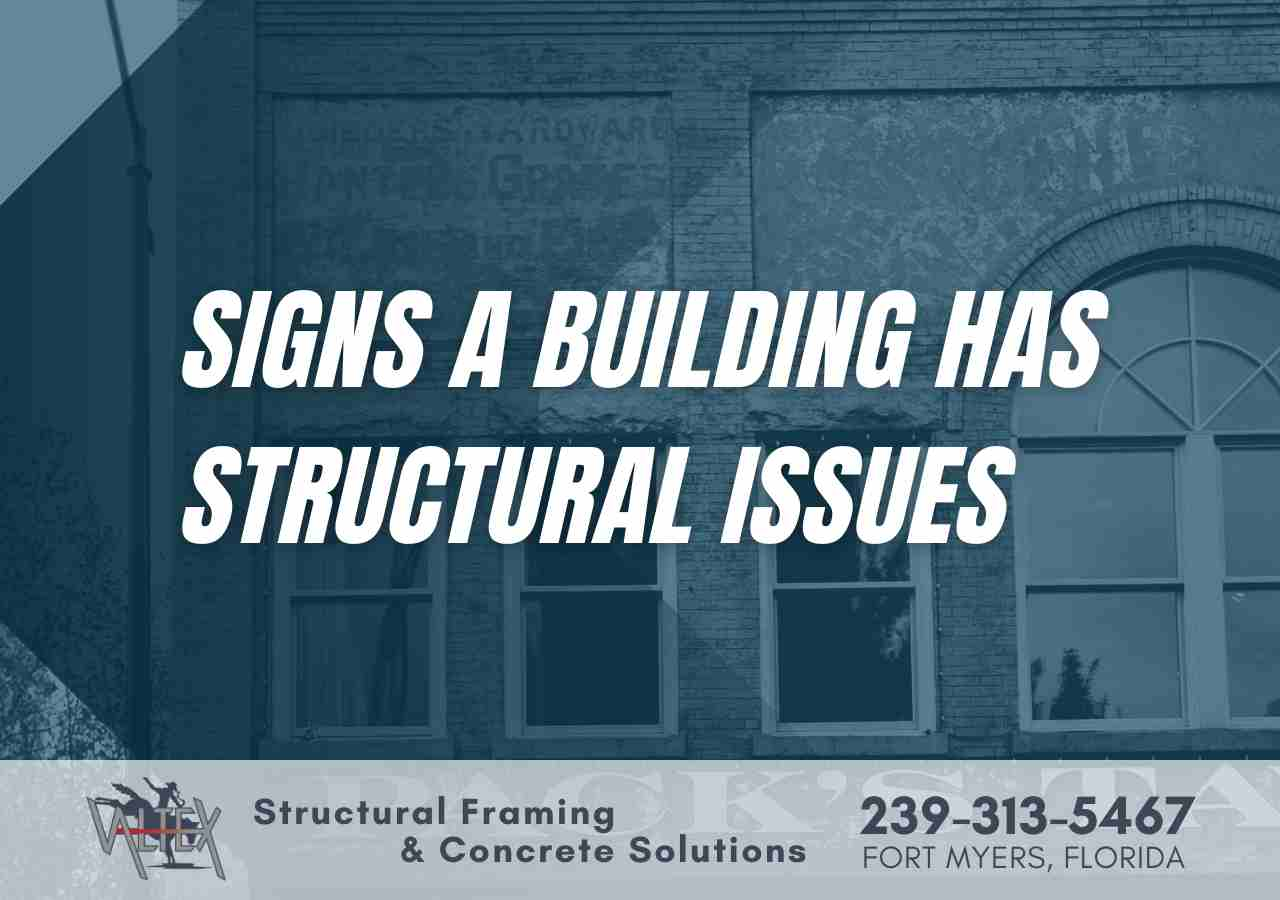
Structural issues are some of the most serious—and most commonly overlooked—threats facing commercial buildings in Florida. From cracked CMU walls to hidden foundation settlement, these problems can stay hidden for years until they suddenly become too costly to ignore. Whether you're a property owner, manager, or investor, spotting the early warning signs of structural trouble can save you thousands in repairs and lost revenue.
Cracks in Walls or Ceilings - Structural Issues or "Settling"
Cracking is one of the most obvious signs something's wrong—but not all cracks are created equal. Hairline cracks in drywall may be cosmetic, but large horizontal cracks in concrete masonry units (CMUs) or stair-step cracks around windows and doors could indicate shifting or failure in the structure itself.
One term you’ll hear often is “settling”—but it’s not always a precise diagnosis. Buildings naturally settle somewhat in the first few years after construction, especially in areas like Florida where soil conditions vary. However, when cracks appear long after a building has stabilized, they may signal something more serious, such as foundation movement or structural stress. The term "settling" can sometimes downplay more urgent underlying issues, which is why it’s important to have a qualified expert evaluate any visible cracking.
If cracks are getting wider over time or you see them near structural elements like beams or columns, it's time to call in a professional.
Uneven or Sloping Floors
Uneven flooring isn’t just an inconvenience—it’s often one of the most physically noticeable indicators of structural issues in a building. Whether it’s a sag in the hallway or a slope in the office, these irregularities may be pointing to serious foundation movement beneath the surface.
This can be caused by foundation settlement, slab failure, or deteriorating support piers—especially in older buildings or those built on expansive soils. Structural issues that affect the floor may also create ripple effects throughout the building’s framing and finish work.
Signs to look for:
- Gaps between the floor and baseboards
- Doors that swing open or closed by themselves
- Floors that feel bouncy or soft in areas
These signs might seem like minor annoyances at first, but they often indicate deeper structural issues that could worsen over time. If left unchecked, they may lead to more extensive damage throughout the building and more costly remediation work.
Doors and Windows That Stick - Could This Be Structural Issues?
If doors or windows are suddenly hard to open or don’t latch properly, your building may be moving. Structural movement—especially from foundation issues—can throw openings out of alignment.
This issue is common in buildings where internal load-bearing walls or framing have shifted. It may also signal deterioration in wood framing, corrosion of steel supports, or slab movement.
Visible Rust, Corrosion, or Spalling
Rebar corrosion and concrete spalling are major concerns in Florida’s coastal climate. Salt air accelerates corrosion, and once moisture gets into concrete, it starts to expand and break apart the structure from within.
Look for:
- Flaking or crumbling concrete on balconies, walkways, or columns
- Rust stains leaching through walls or ceilings
- Exposed rebar or cracking around support beams
These are not cosmetic issues—they're structural red flags.
Water Intrusion and Moisture Damage
Structural issues often go hand-in-hand with water problems. Water can degrade CMU mortar, rot framing, or wash away soil supporting your foundation.
Early warning signs:
- Efflorescence (white powder) on concrete or masonry
- Persistent musty odors in crawlspaces or basements
- Peeling paint, mold, or bubbling drywall
If you’re seeing these signs, it could mean moisture has already compromised your building’s envelope or foundation. In Florida’s humid climate, small leaks can escalate quickly. Over time, moisture intrusion can undermine the structural integrity of key building components, leading to more serious structural issues. Timely inspection and remediation are critical to prevent costly damage.
Modifications That Compromised Load Paths
Over the years, many buildings undergo renovations—some of which may not follow code. Removing or altering load-bearing walls, cutting into beams, or overloading floors with heavy equipment can all cause structural strain.
If you've inherited a building with a complicated renovation history, it's worth reviewing the integrity of the load path and framing.
Aging Construction & Structural Issues
Florida’s building code has come a long way since the 1980s, especially after Hurricane Andrew in 1992. Older buildings may not have:
- Reinforced CMU walls
- Proper hurricane ties or shear walls
- Engineered trusses or load-rated beams
While these buildings may still be standing, they’re often not compliant—and in a storm-prone state like Florida, that’s a risk you can’t afford to ignore.
